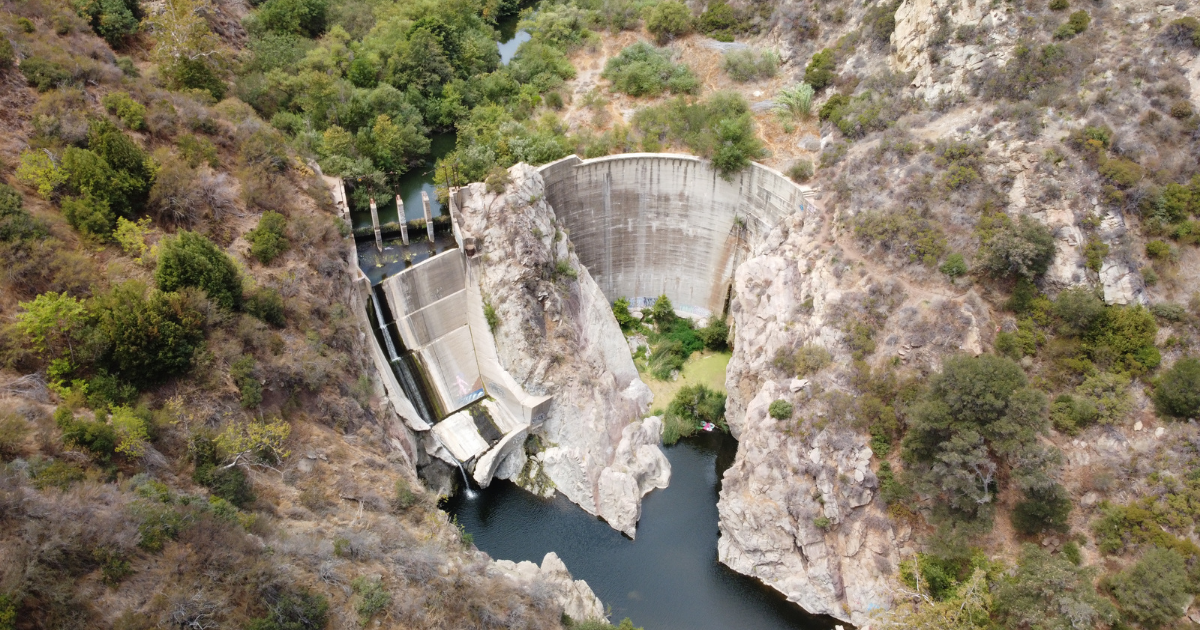Rindge Dam Removal – Request for Qualifications
Rindge Dam Removal - Request for Qualifications
Built on the ancestral lands of the Chumash, Fernandeno, and Gabrielino/Tongva people, Rindge Dam is an obsolete concrete structure located three miles from the Malibu coast. The dam was built in the 1920s for local water supply and decommissioned in 1967. It is currently owned and managed by the California Department of Parks and Recreation (CDPR) as part of Malibu Creek State Park. Malibu Creek watershed is an important ecological corridor for the region that links Santa Monica Bay, Malibu Lagoon, and riparian systems. Rindge Dam has impacted the ecological integrity of this watershed by impounding 780,000 cubic yards of sediment, which prevents natural beach nourishment along the coastline; fragmenting habitat for multiple aquatic and terrestrial species; and acting as a total barrier for the federally endangered Southern steelhead.
CDPR and its federal, Tribal, state, and local partners studied dam removal alternatives and completed a feasibility study in 2020 that resulted in an Integrated Feasibility Report. The Locally Preferred Plan was selected for Rindge Dam removal, which was built on technical studies and local stakeholder input. The planning, engineering, and design (PED) phase is the exciting next step and will chart a path forward to remove Rindge Dam and restore Malibu Creek watershed’s ecological integrity.
CDPR has released a Request for Qualifications (RFQ) to select a primary contractor to lead the technical team for the PED phase. This project presents an extraordinary opportunity to be a part of systemic and sustainable ecosystem restoration in southern California. Contractors interested in this opportunity may view the RFQ at https://caleprocure.ca.gov/event/3790/0000023448. Statements of Qualifications are due by 2:00 PM on July 1, 2022.





